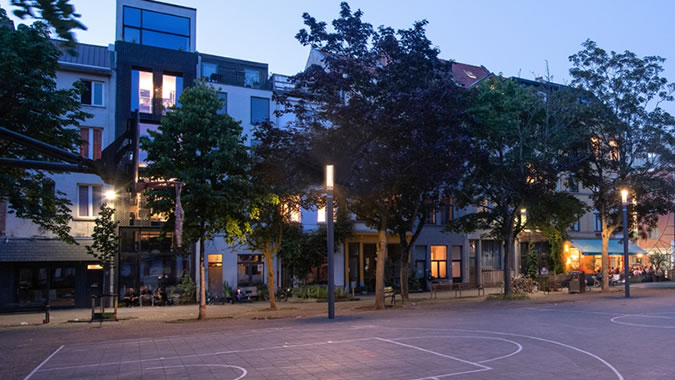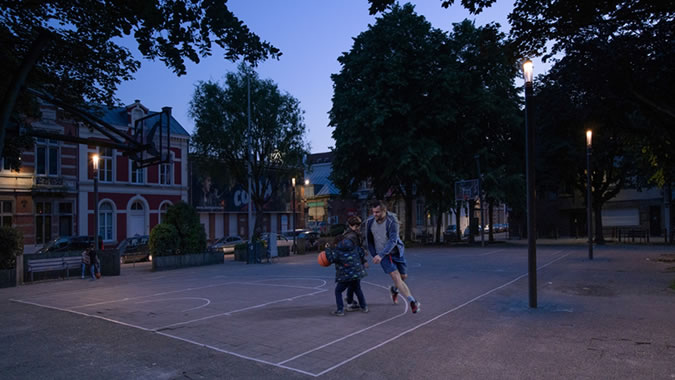Smart Zone
Innovating technology to build a smart city adapted to citizens needs
Antwerp wants to become a truly smart city. A city that listens to the needs of its citizens and visitors, that adapts to their constantly changing lifestyle.
In collaboration with imec and its citizens, the city has created a Smart Zone in the lively Sint-Andries district – a typical urban neighbourhood – to test and evaluate how technology can make a city more pleasant, secure and sustainable. These innovations can then be applied to the whole city. This pilot project of the city of tomorrow includes a dozen projects, such as the management of billboards, traffic lights, and public lighting.
Make a safer and more pleasant city
In practice, the objective of the Smart Zone is to make the city safer and more pleasant. Thanks to interconnected smart cameras and detectors, people will be able to cross the street more safely or the squares will be lit in a more energy-efficient manner, adapting in real-time to actual needs.
The city of Antwerp is well aware that they need to do more than simply switch the lights on and off. With today’s technologies, lighting can be managed intelligently and dynamically.
Schréder is proud to have participated in this project with its Shuffle and Piano luminaires, all controlled by a remote management system.
Squares, as public spaces, play an important role in the social life of people, allowing them to relax and meet. It is vital that they are lit at night, but it is important to wisely manage the lighting reduce unnecessary energy consumption and light pollution.
Detectors and cameras to only light only when in use
The goal was to only light Sint-Andries square, and its basketball court, when they are being used. The Shuffle columns installed on this square are fitted with:
- 360° lighting modules with warm white LEDs;
- a light ring with 2 colours: red and green;
- an Owlet IoT node.
In addition, motion detectors, noise detectors, weather sensors and intelligent cameras have been installed on the square.
The detectors and cameras send a multitude of information in real-time to the WorldWideStreams (WWS) platform developed by Nokia Bell Labs. In practical terms, all sensor information is processed and aggregated as quickly as possible enabling the correct actions to be carried out. Imec, developed a rule engine that contains all the logic for the system; when a specific trigger comes in via the WWS platform, it knows and decides what needs to happen. For example:
- When the basketball court is not being used, the Shuffle luminaires are dimmed. When people start to play, the movement and noise detectors send a signal so that the lighting levels are automatically increased to 100%;
- When the cameras detect someone walking across the square during the night, the lighting level of the Shuffle columns immediately switch to 100%;
- When weather sensors predict poor visibility due to imminent rain or snow, the light ring changes from green to red to warn local residents. The lighting level in the luminaires on the edge of the square increases to maximum levels to improve visibility.
Lighting that adapts to the type of user
The streets surrounding the square are lit by 39 Piano luminaires fitted with neutral white LEDs and controlled by the DALI control system. In addition, each luminaire is also fitted with an Owlet IoT node. Motion detectors work with the lighting system to determine the right level of light necessary. Microphones have also been installed in the streets to raise the lighting level to 100% when exceptional noise is detected.

